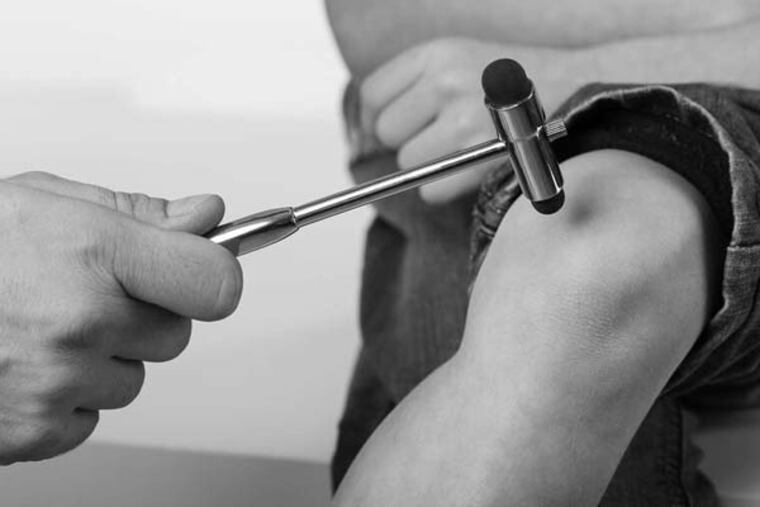Medical Mystery: Why can't boy walk?
A distraught medical student rushed over to me during a sick clinic usually devoted to fairly benign matters such as colds and minor rashes.

A distraught medical student rushed over to me during a sick clinic usually devoted to fairly benign matters such as colds and minor rashes.
"I think something is really wrong with this patient", the student told me. "He can't walk."
The 10-year-old in the exam room had suddenly lost the use of his legs for no apparent reason. His father and uncle carried him into our waiting room, with his mother and aunt by his side.
"He was fine yesterday - then, this morning, he couldn't walk," the boy's father told me.
I quickly glanced at the child and saw he was coherent and in no apparent pain.
"What happened?" I asked the child. He said he woke up that morning and tried to get out of bed but couldn't bear any weight on his legs and fell to the floor.
He didn't have a fever, was not throwing up, and didn't have a headache, all of which might have signaled acute brain issues such as meningitis or increased pressure on the brain from a tumor or aneurysm. Cranial nerves that control his face and throat were normal, and so was his eye exam, further excluding most serious brain disorders.
There are several conditions, all uncommon, that can cause sudden paralysis in a child.
Myasthenia gravis, which affects communication between the nerves and the muscles, is one possibility.
Guillain-Barré Syndrome is another disease in which the body attacks the nerves that make muscles work.
Another disorder, periodic paralysis, can occur when the body doesn't produce enough potassium to make muscles move.
Lastly, there is tick paralysis: Certain ticks carry a toxin that can cause temporary paralysis until the tick is removed.
Hours after waking up, my young patient could neither bear weight on his legs nor move his legs when asked. I pulled out a reflex hammer from my white coat.
Solution
As soon as I tapped the boy's patellar tendon with the hammer, his lower leg immediately kicked forward. I repeated this maneuver on other reflexive areas and his reflexes as well as pain fibers seemed intact.
I asked his father to step outside the exam room for a moment.
"Have there been any new stressors is your son's life recently?" I asked.
The father looked down to the floor, eyes welling up.
"First, my father passed away last week, and now this. We buried him just two days ago," he said. "My dad and my son were so close."
That was the clue I needed to conclude that my patient was exhibiting a condition even more rare than the medical disorders I had ruled out.
Conversion disorder, sometimes called functional neurological symptom disorder, can happen after an emotional trauma, such as the death of a loved one. Though the trauma has no physical component, it expresses itself through the loss of physical function such as the ability to walk, talk, or see.
I explained this diagnosis to the family, explaining how powerful the mind-body relationship is and how their son displayed his grief through the paralysis.
I told the child that I was sorry about his grandfather and that I thought he would be able to walk again by the next day.
Conversion disorder doesn't always resolve so quickly, though children generally recover faster than adults. For most people, acknowledging the source of the stress, and knowing that the feelings are real, even if they are not based in a physical illness, is enough to recover function.
I called the family the next day and learned - to their great relief, as well as mine - that their son was able to walk again.